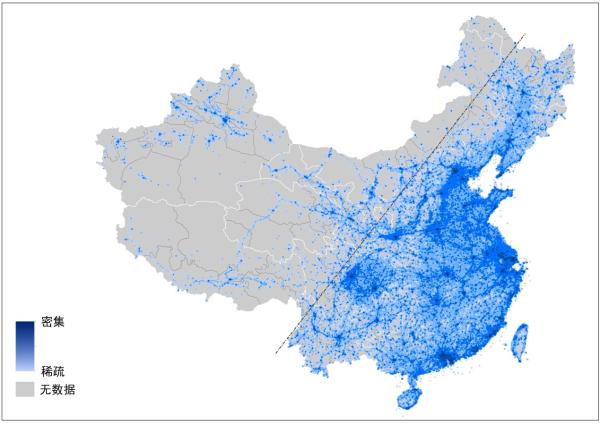Last month Dr. Yang Yang was officially awarded the Emerging Scholar of Distinction award from the International Academy for the Study of Tourism. Many well-deserved congratulations to Dr. Yang for all of his work and contributions to the industry!

Last month Dr. Yang Yang was officially awarded the Emerging Scholar of Distinction award from the International Academy for the Study of Tourism. Many well-deserved congratulations to Dr. Yang for all of his work and contributions to the industry!


Dr. Yang was invited to craft a book chapter discussing big data applications in monitoring tourist flows using GIS. Working together with Dr. Dong Li at China Academy of Urban Planning and Design, Dr. Yang applied various geo-visualization and spatial statistical tools to better understand tourist behavior from the Chinese Weibo data (akin to Twitter data) during the Golden week. Dr. Li programmed to capture abundant information from Weibo users, especially the geo-coded origin and destination attributes, and Dr. Yang applied the analytic tools to decipher the spatial-temporal flow patterns via this valuable big data source.
In an effort to review and synchronize previous big data analytic application in tourism and hospitality management, Dr. Yang Yang worked with Dr. Bing Pan (Associate Professor from College of Charleston) to craft a book chapter proposing a conceptual framework that connects the types of big data with stages of travel. The study reviews literature on the use of big data sources in the tourism industry, including data gathered from search queries, Web analytics, customer reviews, location tracking data, and social media. Most existing studies have focused on building behavioral models and validating correlational relationships between travel behavior and big data. Research on personalization, optimization, and resource allocation is lacking, and studies involving forecasting with big data for specific properties or businesses are also rare. Nonetheless, the combination of multiple data sources possesses a huge potential to dramatically improve the accuracy of forecasting and monitoring.
Download fulltext (in pdf)
A paper co-authored by Dr. Yang Yang and MTHM student Jing-huei Huang, entitled “Neighborhood Characteristics and Restaurant Location in the United States”, has been accepted for a STAND UP PRESENTATION at the 20th Annual Graduate Student Research Conference in Hospitality and Tourism. In this paper, based on the location data of more than 1 million US restaurants stored in a comprehensive geographical information system (GIS) database, several econometric models are proposed to recognize various determinants of restaurant location at a zip-code level.
Dr. Yang Yang was invited to visit Meiji University in Tokyo, Japan. Located in the center part of Tokyo, Meiji University is renowned as one of the leading private universities in Japan. Dr. Thomas Jones, Associate Professor in the Graduate School of Global Governance, Meiji University worked closely with Dr. Yang on a project to estimate the economic value of Mt. Fuji. In the project, Drs. Yang and Jones proposed a zonal travel cost model (ZTCM) to calibrate the recreational value of Mt. Fuji based on the annual domestic climber survey data. In particular, the change of this value before and after the World Heritage Site designation was investigated. On September 13, Drs. Yang and Jones successfully presented their research outputs in the International Conference on New Thinking in Economic Theory and Policy, and discussed in detail with other leading resource economists, such as Prof. Katsuhiro Saito from the University of Tokyo.
Dr. Yang Yang was invited to visit four research university during his travel to China, and they are East China Normal University (ECNU) in Shanghai on May 17, Jiangxi University of Finance and Economics (JXUFE) in Nanchang, Jiangxi on May 23, Jiangsu Normal University (JSNU) in Xuzhou, Jiangsu on May 26, and Anhui Normal University (AHNU) in Wuhu, Anhui on May 29. In these visits, Dr. Yang delivered successful research presentations on recent advance in tourism demand analysis, as well as the on international tourism/hospitality education. Moreover, Dr. Yang had further discussion with faculty members in those universities on future research collaboration.
(Upper-left: AHNU; upper-right: ECNU; bottom-left: JSNU; bottom-right: JXUFE)
News link on university website (in Chinese):
http://www.geo.ecnu.edu.cn/s/394/t/784/9d/61/info105825.htm (ECNU)
http://lyxy.jxufe.cn/newsinfo.asp?type=8&id=578 (JXUFE)
http://www.jsnu.edu.cn/s/1/t/2/9d/89/info171401.htm (JSNU)
http://tourism.ahnu.edu.cn/3540/view/138101 (AHNU)
On June 16, 2014, Dr. Yang Yang was invited by the CICTourGune research center to deliver a research presentation on the application of spatial econometrics in tourism and hospitality studies. In his presentation, Dr. Yang surveyed various spatial econometric models and their applications in investigating tourism demand and hotel price. In particular, Dr. Yang discussed several of his recent publication on top-tier tourism journals focusing on spatial spilliover effects.
Located at San Sebastian, Spain, the CICTourGune research center is one of the leading international tourism research institutes in Europe. During the visit, Dr. Yang discussed several possible collaboration projects with CICTourGune research associates, especially those on big data analytics in tourism and hospitality.
With the generous support from the OYCF Teaching Fund, Dr. Yang Yang taught a graduate-level course in the School of Geographic and Oceanographic Sciences, Nanjing University, one of the most prestigious research universities in the mainland China, from May 23 to June 3, 2014.
The course, entitled “Quantitative Analysis in Tourism Research”, was designed to be a one-credit graduate class, and a total of 24 students have officially registered this class. It surveyed various multivariate statistical modeling techniques that are widely used in tourism research. The course included both lecture and lab sections. Lectures focused mainly on several important topics, including cross-tab analysis, ANOVA, factor analysis, cluster analysis, regression models and diagnostics, and simple structural equation models. Labs helped the students use statistical packages (such as SPSS and AMOS) to apply the methods covered and analyze tourism data.
Most students demonstrated a well understanding of basic quantitative methods covered in the class and were able to use statistical packages to investigate the data set with these methods. More importantly, students got more familiarized with the general framework of quantitative methodology and were capable of evaluating the appropriateness of methods for their own research projects.
You must be logged in to post a comment.